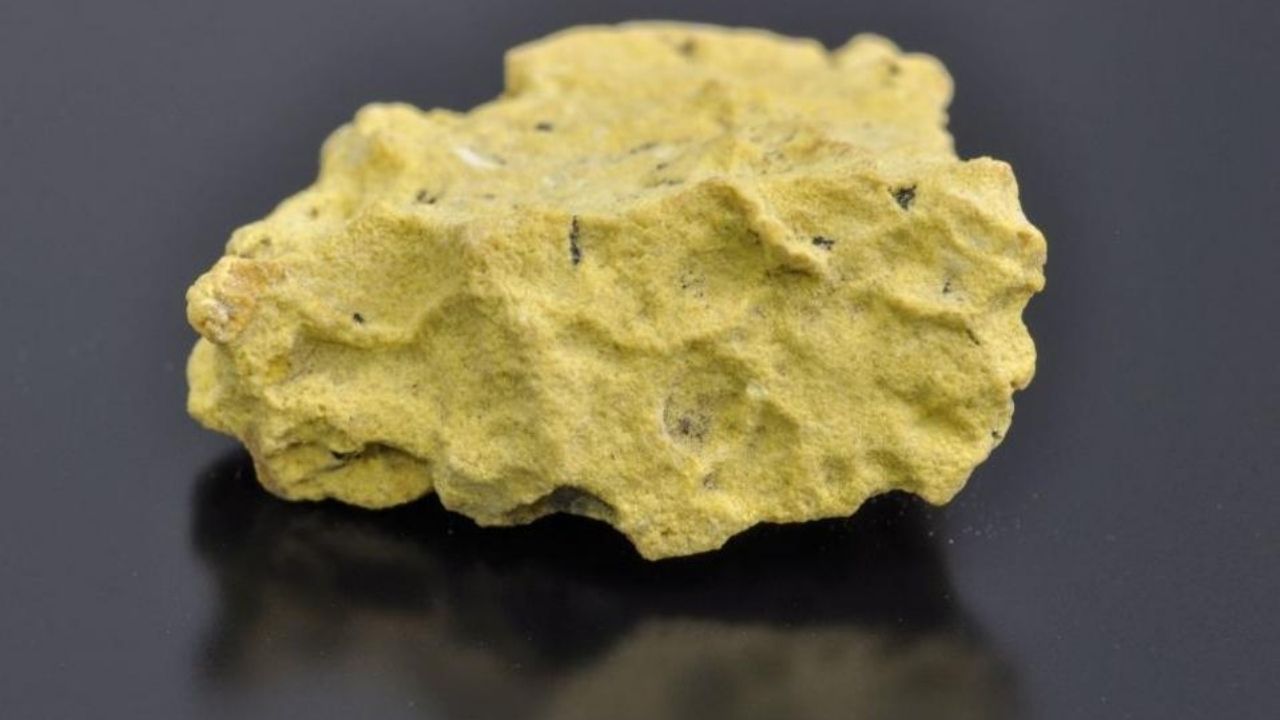Researchers at a German university have confirmed the first-ever discovery of ultra-rare humboldtine within the country’s borders from a geological sample left in storage for nearly 75 years. The find at TU Bergakademie Freiberg provides new insights into the nation’s mineralogy and highlights the scientific value of historical archives.

Ultra-Rare Humboldtine Found in Germany
| Key Fact | Detail |
| Mineral Identified | Humboldtine (Fe2+(C2O4)⋅2H2O), a rare iron oxalate. TU Bergakademie Freiberg |
| Origin of Sample | Collected around 1949 from the Lichtenberg Absetzer dump near Ronneburg, Thuringia. |
| Significance | First confirmed evidence of this mineral in Germany. |
| Identification Method | Modern analytical techniques, including X-ray diffraction. |
Serendipitous Find in University Archives
The confirmation of humboldtine resulted from a routine analysis of archived materials at the Mineralogical Collections of the TU Bergakademie Freiberg. The rock sample was originally collected in the late 1940s from a mining dump in a former uranium mining area in Thuringia. For decades, its true composition remained unknown.

The mineral was identified by Dr. Gerhard Heide, a custodian of the university’s collection. While examining the old specimen, he noticed the unusual yellow, needle-like crystals. “The find was a complete surprise,” Dr. Heide stated in a university press release. “It shows that even collections that are decades old can still hold new secrets.” Advanced analytical methods, unavailable when the sample was first collected, were crucial for the positive identification.
The Significance of Ultra-Rare Humboldtine
This mineral discovery is significant not only because of its rarity but also because of its composition. Humboldtine is an organic mineral, which places it in a special class of geological materials.
What are Oxalate Minerals?
Unlike most minerals, which are purely inorganic, oxalate minerals like humboldtine form through the interaction of geological processes with organic matter. Humboldtine is an iron(II) oxalate dihydrate, meaning it contains carbon atoms derived from biological sources, such as decaying plant matter.
“These minerals are essentially metal salts of oxalic acid, which is common in the biological world,” explained a spokesperson for the university. This connection between the living and geological worlds makes them a subject of intense scientific interest. Their presence can indicate specific environmental conditions where organic material interacts with metal-rich water.

Implications for Modern Science
The rediscovery is more than a simple cataloguing exercise; it has broader implications for both geological research and the preservation of scientific collections.
Validating Historical Collections
Experts suggest this find is a powerful argument for the continued maintenance and study of historical university archives. These collections serve as a physical timeline of the Earth’s geology, holding samples from locations that may no longer be accessible. Modern technology allows scientists to re-examine these specimens and uncover information that was previously unobtainable.
According to the official university statement, the TU Bergakademie Freiberg collection contains over one million specimens, offering a vast resource for future research. This discovery of ultra-rare humboldtine validates the immense effort and cost associated with preserving such comprehensive archives.
The confirmed specimen will be preserved at the university and made available for further non-destructive analysis. Scientists hope that future studies may reveal more about the specific conditions under which it formed, offering a glimpse into the post-mining environment of the mid-20th century. The find serves as a reminder that treasures of scientific importance can often be hidden in plain sight, waiting for the right tools and a curious eye.





